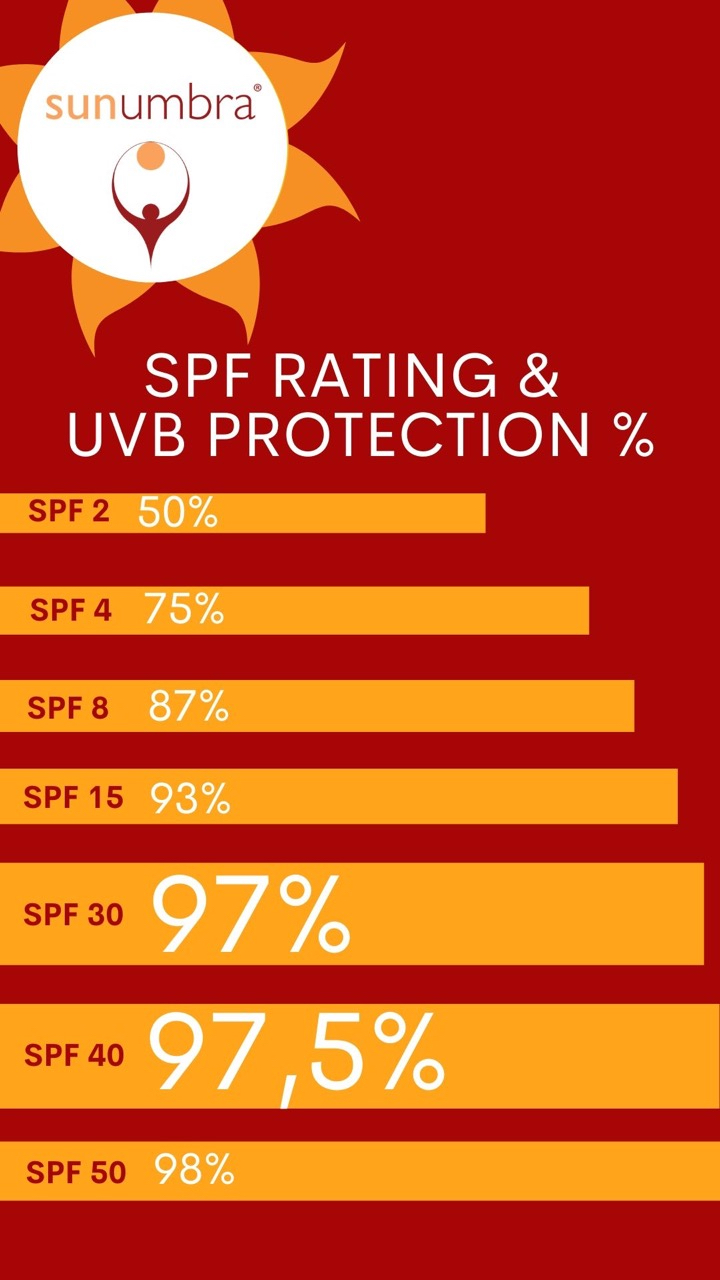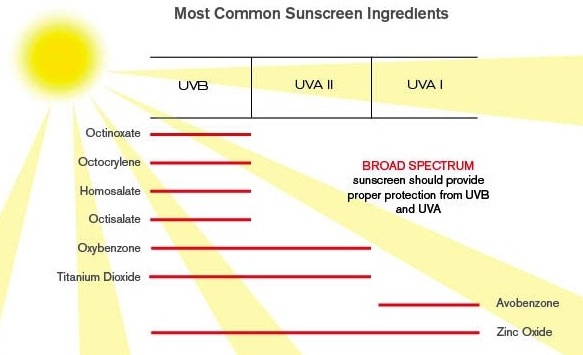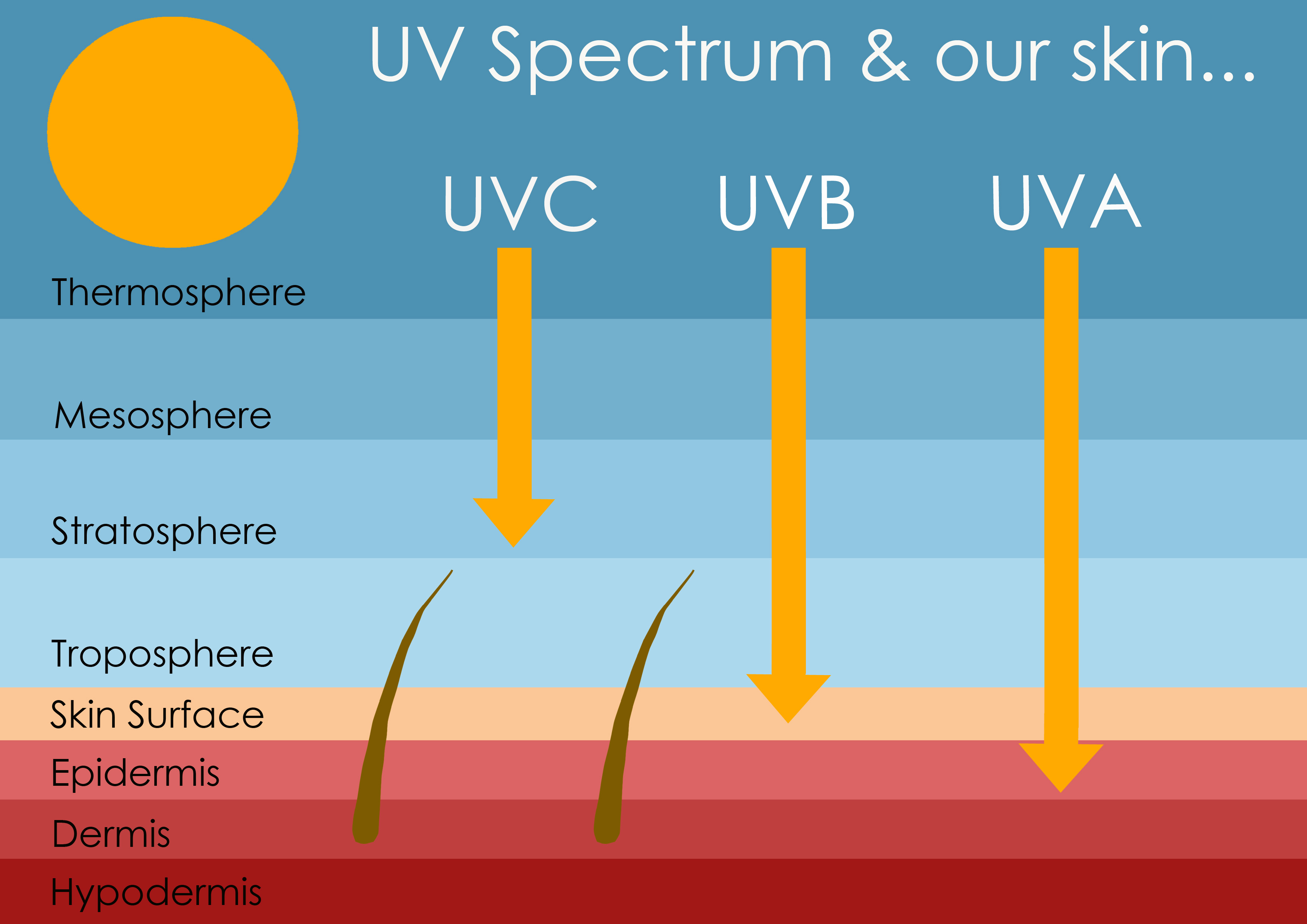SPF measures sun protection
Sunscreen's effectiveness against sunburn is measured through the SPF (Sun Protection Factor) scale, which is internationally accepted.
Originally started by the chemist Franz Greiter in 1962, it is now the global de facto measurement for UVB ray protection in a sunscreen product offered commercially.

Most people are happy enough if they select a sunscreen with a high sun protection factor and be done. Not many choose to find out what this protection actually means, that they are choosing to buy.
Never mind what all the technical sunscreen terms mean, or what the difference is between Sun Protection Factor, UVA protection, UVB protection and Broad Spectrum balanced protection
Related topics
Sun Protection Factor-15
Sun Protection Factor 30
Sun Protection Factor swimwear
Sun Protection Factor 50
SPF Child Clothing
SPF measures sun protection from UVB only, not UVA.
What exactly is the Sun Protection Factor?
Defined according to international standards, it corresponds to the relation between:
- the amount of UVB radiation that will cause sunburn on unprotected skin and
- the amount of UVB radiation that will cause sunburn on sunscreen protected skin
A little more practically put....it measures the length of time a sunscreen product will protect the skin from reddening after exposure to UVB rays, compared to how long the same skin takes to redden without any sunscreen protection.
However, there are many complexities involved and no matter what the Sun Protection Factor, for best protection it is almost universally recommended to reapply the sunscreen every two hrs or immediately after swimming or heavy sweating and towelling off.
SPF - Common confusions
 Electromagnetic spectrum
Electromagnetic spectrumI find one of the main confusions when it comes to understanding what you're buying in a sunscreen, is exactly how your sunscreen protects you from the UltraViolet radiation light rays.
Ultraviolet (UV) rays are part of the electromagnetic radiation spectrum, which covers radiation wavelengths from 100 nm to 400 nm. In the whole electromagnetic spectrum the UV rays are shorter than Visible Light but longer than X-rays.
The following details are an attempt to clarify some of the misunderstood or confusing elements of UVA and UVB:
- UVA (ultraviolet-A):
long-wave solar rays of 315-400 nanometers (nanometer = billionths of a meter).
UVA penetrates the skin more deeply than UVB, tanning the skin and wrinkling, leathering, and causing other aspects of "photo-aging", as well as skin cancers, including melanomas - UVB (ultraviolet-B):
short-wave solar rays of 280-315 nanometers.
More potent than UVA in producing sunburn - UVC (ultraviolet-C):
short-wave solar rays of 200-280 nanometers. Completely absorbed by the ozone layer and atmosphere
The UVB rays, being shorter in wave-length, will burn the skin at the surface, resulting in the visible sunburn we are familiar with. But UVA, although only tanning the skin, can cause far deeper damage.
3 factors will keep people out of the sun:
- Discomfort from heat, motivating a person to seek shade
- Knowledge that too much unprotected exposure leads to a painful sunburn
- Knowing sunburn can cause skin cancer
Knowing you are wearing a sunscreen with high UVB (ie. high SPF) protection, keeps people in the direct sun longer than they would ordinarily be without any sunscreen on. This in turn allows more time for the deeper penetrating UVA to be received, than when you have no sunscreen on.
Thus, protecting against both UVA and UVB becomes of paramount importance. This is known as 'broad spectrum' protection.
SPF vs Broad-spectrum protection
"Broad spectrum" indicated on a sunscreen requires that it has been certified for sun protection against both UVA and UVB.
It is very important to note that it does not guarantee protection against all the UVA wavelengths, however. Most broad-spectrum sunscreens with a Sun Protection Factor of 15 or higher do a good job against UVB and the short UVA rays. However, only if they contain avobenzone, zinc oxide, or titanium dioxide, are they able to be effective against the wider UVA spectrum as well as UVB.
See the table below for a good view on the effectiveness of various sunscreen active ingredients.
 Common Sunscreen Ingredients and their relative protection capabilities
Common Sunscreen Ingredients and their relative protection capabilities




New! Comments
Have your say... please leave me a comment in the box below.